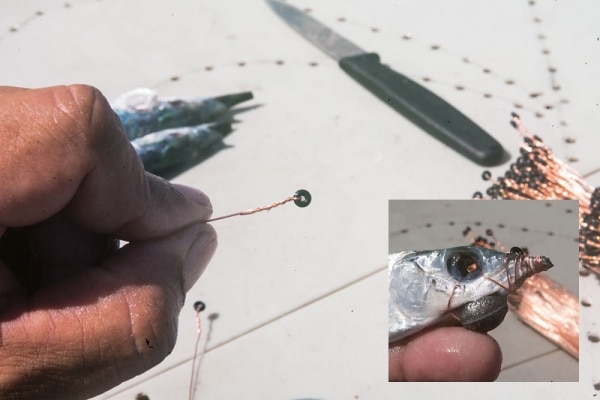
While there are as many ways to rig a ballyhoo as there are mates doing it, some of the methods always seem to rise above the rest in terms of effectiveness on the bite and ease of rigging. For many years now, anglers fishing with circle hooks in South Florida and elsewhere have used the swivel rig to arm their ballyhoo baits.
The swivel rig is made by attaching a small barrel swivel that matches the outside diameter of your circle hooks to a piece of rigging wire, passing the wire down through the bait’s upper lip and nesting the top end of the swivel on the top of the bait. The wire is then brought around the backside of both gills, through the eye sockets and wrapped down around the protruding swivel. Once you have a bunch of these rigged up, you simply make a bunch of leaders with the circle hook snelled on the end. When it’s time to rig up, you just pass the circle hook through the swivel and start trolling. The problem is that sometimes it’s hard to get swivels to match your hooks, and you sometimes have to modify the swivel with a pinch to make the hook stay in place. The one-size swivel also means you are stuck using the hooks that fit it. It can also be a chore for a newbie to get the hook through (or out) of the swivel when changing baits.
Nowadays, I see crews abandoning the swivel and instead using a small, strong rubber grommet in its place. The little rubber doughnut can accommodate several different hook sizes, and it’s much easier to get the hooks in and out of the grommet when necessary. The rest of the rig is virtually the same as the swivel setup; you just replace the swivel with the rubber doughnut. Grand Slam tackle in Jupiter, Florida, carries the grommets (Ballyhoo “O” rings). For more information, call 866-592-2824, or visit grandslamtackle.com.







